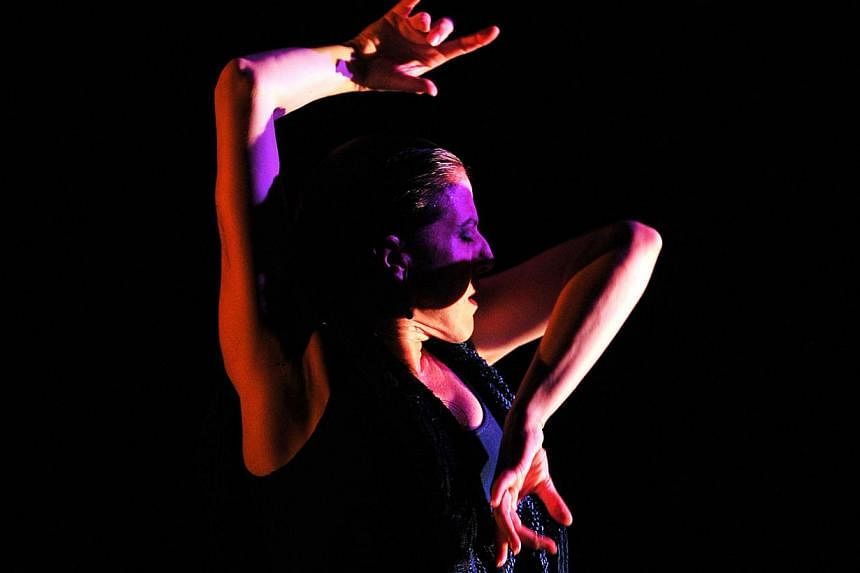Maria Pages has done it again.
When the curtain fell on I, Carmen last Friday at the Esplanade Theatre, the crowd collectively leaped to its feet with a roar of well-deserved, thunderous applause, making it two for two.
The last time she was here in 2009, her world premiere of Dunas was also met with a standing ovation and rave reviews from critics.
That collaboration with Flemish-Moroccan dancer Sidi Larbi Cherkaoui was also part of the Esplanade's da:ns festival.
This time round, the flamenco virtuoso tackled the somewhat prickly and changeable notion of womanhood, with 10 seamless segments each set to music inspired by Bizet's opera.
She steered clear of the provocative, fiery gypsy Carmen of the original, and instead focused on different facets of being a woman, such as maternity, love, teaching and fear.
It is easy to see why everyone fell in love with her. She put so much of herself on stage that it was impossible to leave the theatre without feeling that you know her, not just as a performer but as person.
The March Of Everyday Life was a song-and-dance tirade against anti-aging creams, obsession with the weighing scale, and having to squeeze into suffocating girdles.
"I can't find anything in my bag!" the dancers cried. "Give me a beer!"
In the middle of the set, Pages paused, breathless, and addressed the audience in broken but endearingly effusive English.
"We are what we are. I am 51, how can I not have wrinkles? It's not possible," she declared to raucous applause. "I like my three kilos extra, maybe four."
That kind of ease on stage only comes with absolute mastery of the art, which she certainly has.
Sharing the stage with six other female dancers from her company, even wearing similar costumes and dancing the same steps, it was always easy to pick her out.
There was always something extra - a quicker step, a steadier turn - that made her utterly, wholly captivating.
What also sets Pages apart from other flamenco masters is that she does not just cling to her craft, and seek refuge in tradition.
Yes, there are still hallmarks of flamenco: stiffly held backs, lightning footwork and dizzying turns.
But when was the last time you saw a flamenco dancer wearing an aprons, or tapping on a hardcover book as percussion?
Just the opening number alone set the tone for the evening. On a carefully lit stage, with the performers dressed head-to-toe in black, the eye saw no dance, only six white fans snapping open and close to Bizet's overture.
Even at the end of the night, Pages donned the signature scarlet dress, pearls and red flower of Carmen, only to shed them in a crumpled pile for the freedom of being oneself.
That is what makes her unique, and that is what makes her great.
At the heart of it, Pages is not just a dancer; she is a master storyteller, and dance is her pen.


